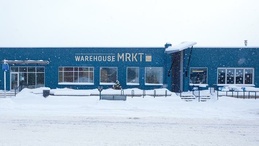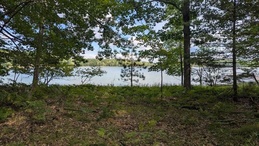Risky business: Sebastian Junger
May 15, 2011
Risky Business: Sebastian Junger on the hazards of journalismBy Robert Downes
Sebastian Junger has lived a life of risk and near-misses. Not to mention
an ability to surprise his readers at every turn: He’s written about
firefighters battling 300-foot flames, doomed fishermen going down in a
hurricane, a serial killer working in his parent’s own home in a suburb of
Boston, and half-mad soldiers bottled up in an outpost in Afghanistan’s
“Valley of Death.”
Yet the world-famous journalist and best-selling author says that even he
doesn’t know what he’ll be writing about next.
“I don’t know, it’s like how do you decide who to fall in love with?”
Junger says via phone from his home in New York City. “You know, it’s not
really a decision so much as a response to something. It takes longer to
write a book than many marriages last, so it has to be something that
you’re really compelled by.
“That’s one of the reasons I’m a journalist,” he adds, “because I really
enjoy delving into these disparate and fascinating topics -- it’s what
keeps me doing it.”
Not that Junger at the age of 49 has any urgent need to plunge into any
new stories: His latest bestseller, War, comes out this week in paperback
and his Oscar-nominated documentary Restrepo was recently released on DVD.
He’ll share those experiences and many others when he appears as a guest
of the Traverse City National Writers Series this Tuesday, May 17 at 7
p.m. at the City Opera House.
LOSING A FRIEND
Junger is still coping with the death of his friend and colleague, Tim
Hetherington, 40, who was killed on April 20 while photographing the civil
war in Libya. Hetherington and fellow combat photographer Chris Hondros
were hit by shrapnel from a rocket-propelled grenade while covering a
battle in the city of Misrata.
The two met four years ago while on assignment for Vanity Fair and went on
to collaborate on Restrepo. Junger and Hetherington were embedded with a
platoon of the 173rd Airborne brigade in Afghanistan’s Korengal Valley off
and on over the course of 14 months, filming everything from the boredom
of camp life to the jumpy chaos of a firefight and the anxiety of manning
a remote outpost in what is called the “Valley of Death.”
“I started working with Tim in September of 2007 and we were very close
from the beginning and worked together for three years,”Junger says,
adding that they conceived the film while sharing their experience at the
outpost.
“I wanted to make a documentary while I was writing my book out there, so
I started shooting video on my first trip, and on my second trip I was
lucky enough to start working with Tim, who was assigned to the story as a
photographer for Vanity Fair. He quickly became as entranced by the topic
as I was and we immediately started collaborating.”
A BEAUTIFUL WOMAN
Junger wrote an homage to his friend in this issue of Vanity Fair in which
he said, “You and I were always talking about risk because she was the
beautiful woman we were both in love with, right? The one who made us
feel the most special, the most alive? We were always trying to have one
more dance with her without paying the price…”
That dance goes back to Junger’s earliest days as a writer. In the
introduction to his book, Fire, he recalls working as a tree-trimmer in
his home state of Massachusetts in his late 20s while mulling over the
idea of becoming a writer. It’s a dangerous, terrifying job, dangling from
trees with a chain saw. “Inevitably, I was going to have an accident,” he
wrote, “almost every climber I knew had.”
Sure enough, Junger nipped his ankle with his saw, exposing his Achilles
tendon as well as a new career outlook. The wound provided the impetus
for him to launch a career as a freelance journalist. “The accident was
sloppy and unfortunate, but it made me realize that I didn’t want to be a
climber and struggling writer forever,” he wrote. “I was 30 years old: I
should either tackle a book project or get out of the writing business
altogether.”
Inspired by the firefighters of the Western wilderness, Junger financed
his own trip to Boise, Idaho to interview smoke jumpers for an article
that sold to Men’s Journal. His next project was a book on the fate of
the Andrea Gail, a swordfishing craft out of Gloucester, Mass. That book,
The Perfect Storm, went on to become a huge bestseller for the virtually
unknown writer, and then a film starring Mark Wahlberg and George Clooney.
It also earned Junger an appellation that is music to any writer’s ears:
“the next Hemingway.”
SECOND THOUGHTS
But getting back to combat journalism and Tim’s death, does Junger feel
that his work as a war correspondent in battlegrounds as diverse as
Cyprus, Kosovo, Sierra Leone and Afghanistan has the same sense of
inevitability as his work years ago with a chainsaw?
“Of course, I mean we all know it’s dangerous and all of us in the
profession know someone who’s been killed,” he says. “In my case, this was
the first time losing someone who was very, very close to me.
“But for sure, there’s a heightened awareness of your mortality,” Junger
adds. “I’m 49 and I’m thinking very seriously about not getting shot
at anymore. Partly for the sake of my wife and partly for the sake of me.”
He says “me” with a bit of a laugh and seems pretty solid on that score,
even reiterating later that he’s not sure he’ll be doing much in the way
of combat journalism from here on out. But you have to wonder; this after
all, was one of the last journalists to interview Ahmad Shah Massoud, “the
Lion of the Panjshir,” who led the Northern Alliance against the Taliban
in Afghanistan. This is the guy who went to Sierra Leone in 1999 at a
time of near-cannibalistic violence to investigate the blood diamond
trade. Not to mention traveling alone to Sarajevo in 1993, winging it in
the middle of a civil war. In Fire, Junger wrote that he was “rarely in
serious danger” pursuing these stories… but one might imagine that his
personal idea of danger and risk -- compared to that of the average reader
-- is probably miles apart.
Junger’s Greatest Hits
• The Perfect Storm: A True Story of Men Against the Sea (1997) --
describes the events of an epic storm that took the lives of six crew
members of the Andrea Gail off the coast of Nova Scotia. Beautifully
written, this is a ‘must’ for any student of writing, with journalism as
rich, interconnected and detailed as a fine watch.
• Fire (2001) -- A collection of magazine articles that includes
Junger’s stories on smoke-jumpers, Ahmad Massoud, blood diamonds and
mountain man Jim Colter, among others.
• A Death in Belmont (2006) -- the starting point for this book is a
photo of Junger as a baby with his mother and two workmen at their home
in a Boston suburb -- it later turned out that one of the handymen was
Albert DeSalvo, the Boston Strangler (!). The same day that DeSalvo was
working in the Junger home, a rape-murder was committed a little more
than a mile away. Junger speculates that DeSalvo may have killed Bessie
Goldberg on a lunch break, with another man taking the fall.
• Restrepo/War -- the 2009 documentary and accompanying book depict life
on the frontlines of Afghanistan, focusing on the lives of soldiers
manning an outpost named after a dead comrade in the “Valley of Death.”
Trending

Farm to Glass with Ethanology
When Elk Rapids distillery Ethanology committed to locally-sourced ingredients for their products, it seemed like they&rsquo… Read More >>
MRKT HLDY SHPPNG, aka Warehouse MRKT Holiday Shopping!
Shop the latest from local makers and vendors at the Holiday MRKT Share at Warehouse MRKT in TC, Saturday, Dec. 20, from 10a… Read More >>
Men and Ugly Sweaters
Those two things don’t always go together, but on Dec. 19, you’ll see both out and about in Petoskey and Harbor … Read More >>


